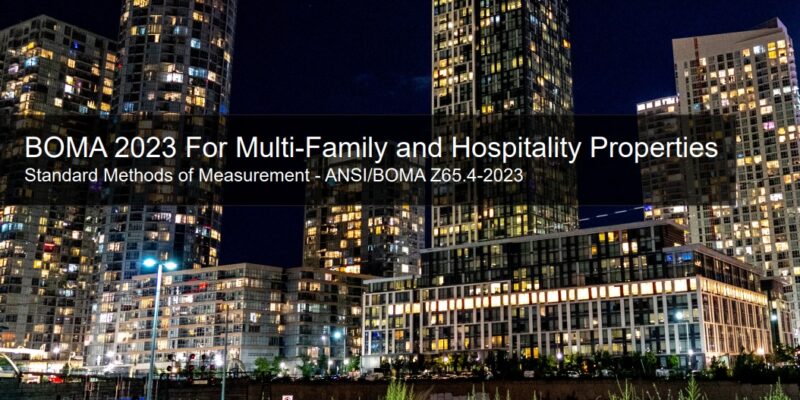In the world of property management, accurate measurements are paramount. They serve as the foundation for rent calculations, occupancy rates, and even property valuations. One way to ensure consistency and precision in measurements is by adhering to BOMA Measurement Guidelines, developed by the Building Owners and Managers Association.
Understanding BOMA Measurement Guidelines
Prior to diving into the guidelines’ implementation, it’s critical to comprehend what BOMA stands for. The Building Owners and Managers Association, or BOMA, is a group that has created extensively accepted benchmarks for evaluating different facets of commercial real estate assets.
These guidelines provide a uniform methodology for measuring rentable areas, determining the boundaries between rentable and common spaces, and addressing unique property features. Following BOMA Measurement Guidelines is not just a matter of conformity; it’s about ensuring fairness, consistency, and transparency in property management practices.
Preparing for Implementation
The first step in implementing BOMA guidelines is preparation. Teams in charge of property management should be knowledgeable about the nuances of these standards. It is imperative that a thorough measurement plan be established. It will also help the implementation process if you are aware of the unique qualities and features of your property.
Measuring Rentable Areas
Office Spaces
BOMA guidelines provide a clear framework for measuring rentable office spaces. The guidelines specify the acceptable methods for measuring square footage, defining the space that can be rented to tenants accurately.
Common Areas
Distinguishing between common areas and rentable spaces is critical. BOMA guidelines offer precise criteria for determining the boundaries between these two types of areas. This is essential in ensuring that tenants are only charged for the space they occupy.
Other Rentable Areas
Properties often include other rentable areas such as parking lots and storage spaces. BOMA guidelines help in measuring these areas accurately, avoiding disputes or confusion over what is considered rentable.
Handling Unique Property Features
Mixed-use spaces or properties with unique features require special attention. BOMA guidelines provide solutions for measuring these unconventional spaces while ensuring consistency.
Documenting and Record-Keeping
Accurate measurement documentation is the key to transparency and dispute prevention. Property management teams should implement robust record-keeping processes, including detailed floor plans, measurements, and supporting documents. Utilizing specialized tools and software can greatly aid in this process.
Handling Changes and Updates
Properties evolve over time, and changes in layout or space allocation are common. BOMA guidelines offer guidance on managing these changes and keeping measurements up-to-date. Communicating these changes to tenants and stakeholders is also a vital part of the process.
Overcoming Challenges
Despite best efforts, challenges may arise in implementing BOMA Measurement Guidelines. These can include disputes with tenants, measurement discrepancies, or conflicts with stakeholders. Understanding these common challenges and having strategies to address them is essential.
Compliance and Certification
Certification is a testament to your commitment to adhere to industry standards. Achieving BOMA compliance and certification demonstrates your dedication to transparent and accurate property management. It’s not just a certification; it’s a mark of excellence.
Conclusion
In the realm of property management, precision and adherence to industry standards are vital. Implementing BOMA Measurement Guidelines is not just about following a set of rules; it’s about establishing a fair, consistent, and transparent process. By implementing these guidelines, you ensure that you “Measure Up Corp.” to the highest industry standards in property management, benefiting both your business and your tenants.

